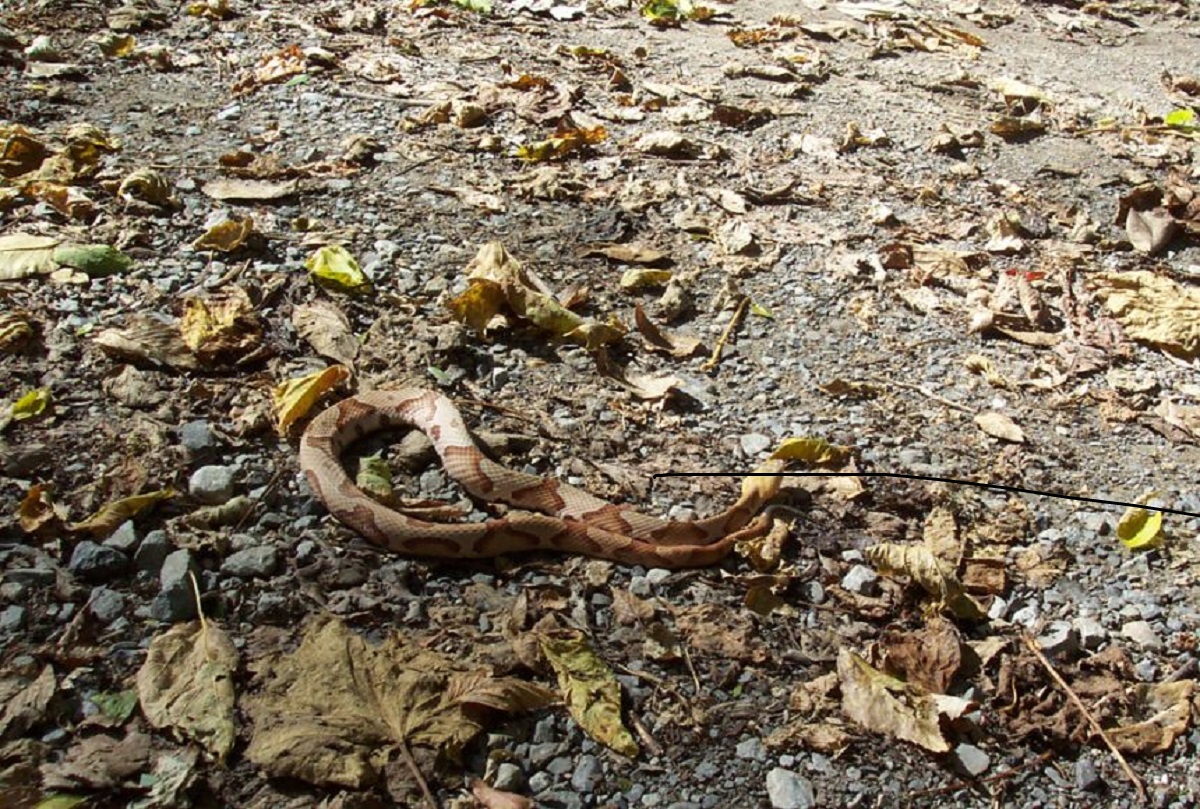
Illinois is no stranger to deer crossings, but did you know that twice a year, one of the largest snake migrations in the United States takes place in Illinois as well? For two months in spring and fall every year, Forest Road 345, more commonly known as ‘Snake Road’ is shut down for a nearly three mile stretch to allow up to 23 species of snakes to migrate between their winter habitat in the forest’s limestone bluffs and their summer base at LaRue Swamp.
Like many wildlife species, snakes face a dangerous obstacle when crossing trafficked roads. Snakes are particularly vulnerable because of their cold-blooded nature. Black asphalt is good at holding on to heat from the sun, and in the cooler early morning and twilight hours, snakes often like to lie out and bask in the warmth, rather than dart across the road quickly like other animals. This can have a deadly impact on snake populations; researchers estimate that up to 25% of all snakes are killed by drivers.
In 1972, the Forest Service decided to take steps to protect these creatures. Initially, the road closure lasted three weeks in each season, but updated research conducted in the mid-1990’s found the migration took significantly longer than previously thought. Since then, Snake Road has been closed from March 15 to May 15 and Sept. 1 to Oct. 30 every year. While it’s impossible to say just how many snakes are saved by this endeavor, researchers and observers have noticed a significant decrease in the number of dead snakes they find throughout the park since the initiative began.
Cars may be prohibited during the snake crossing, but reptile enthusiasts and wildlife researchers are more than welcome to observe the migration as pedestrians. Just make sure to follow all safety guidelines if you participate – among those migrating are three species of venomous snakes! Handling the snakes is prohibited under federal and state law, so stick to the road, keep your distance, and observe from a safe place.
This event also serves as an important PR opportunity for these animals. While many people still see snakes foremost as pests, they play a vital role in the stability of our ecosystems and help combat the overpopulation of other pests like rodents. Researchers hope that the more exposure the public has to snakes, the better they will be able to understand and appreciate their importance.
The Forest Service advises that the best time to witness the migration is in October, so you still have a chance to catch it this year before the end of the month. Trained volunteers, known as ‘Snake Sentinels,’ will be on hand to help visitors identify different species and answer any questions. This unique experience is a valuable educational opportunity for those interested in learning more about our wildlife and shows Illinois’ commitment to protecting our ecosystems.



